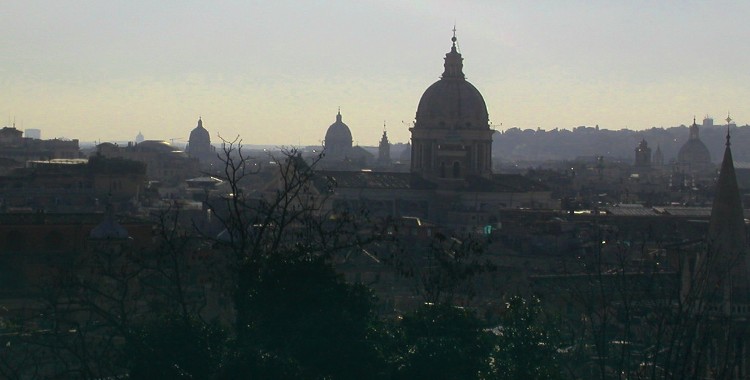The Feast of St. Mary the Virgin
(Isaiah 61:10–11; Psalm 34; Galatians 4:4–7; Luke 1:46–55)
Image source: Eric R. via Flickr (CC BY 2.0)
PDF | Audio (or via Dropbox) | Text:
Earlier this week, I was at a gathering in Colorado that brought together leaders in the Episcopal Church for a couple days of peer training and resource sharing. One of our preachers was Scott Gunn, who leads the Episcopal discipleship organization Forward Movement. As such, he’s also involved in Lent Madness, the yearly tournament that decides which saint will win the Golden Halo.
Tuesday was the Lesser Feast of Anglican spiritual writer Jeremy Taylor, and Scott led us through a different saint’s game, one I think he called Guess How We Got These Readings. It worked pretty well in the case of Taylor; the readings had an obvious connection to his work on Holy Living and Holy Dying, but not so obvious that there wasn’t something to talk about in the sermon.
It would be pretty boring to play “guess how we got this reading” for today’s Epistle, which summarizes rather tersely Mary’s unique part in our salvation story. Diddo for today’s rather obvious Gospel lesson, Mary’s magnificent song of praise. How could we not include that? But our reading from Isaiah makes Scott’s game interesting. Why do we hear this reading in this service? Let me play for a few minutes with one possible answer: more so than usual, I think this lesson invites us to engage our imaginations.
In its original context, this passage from the end of chapter 61 concludes a poem announcing the prophet’s good news to the LORD’s people in exile. Though they had received a double portion of shame and dishonor, their destiny is a double share in everlasting joy. These verses are their song of praise and thanksgiving at that promise. [Joseph Blankinsopp, Isaiah notes, New Oxford Annotated Bible, 3 edition, p. 1064.]
What our liturgy asks us to do this evening is to hear this lesson in a different key, to view it through a particular prism. Try to hear these words as Mary might have heard them, to say them as she might have said them. Does that help us pick up on some new detail? Does it touch our hearts in a new way? I’ll go first.
**
When I hear the collective people of Zion sing “I will greatly rejoice in the LORD, my whole being shall exult in my God”—when I hear that my mind’s eye imagines a civic celebration, a people gathered in joy, a city in bloom.
But when I hear these words from Mary’s perspective, the notion of exulting in God with “my whole being” takes on an added gravity, an essential physicality.
It helps that the Hebrew word in question, נֶפֶשׁ, has a particularly expansive set of possible translations: my soul, my self, my life, my person, my appetite, my mind, my living being, my desire, my emotion, my passion—my whole being shall exult in my God. The words from our marriage vows come to mind as I hear this list: “with all that I am, and all that I have, I honor you” (BCP 427).
For Mary, to magnify the God who magnified her meant carrying and giving birth to a son, feeding him at her breast, protecting him as best she could, and being wounded in her own soul by the sword that pierced her son. It must indeed have taken all that she had to make it through. [pause]
With all that I am, and all that I have, I honor you, O God. I exult in you with my whole being. That is the life commitment to which Christ and his apostles call each of us, over and over again. Sell all your possessions and follow me. Hunger and thirst for righteousness. Let your body be a temple of the Holy Spirit. This is our divine vocation: Call it purity of heart. Call it way, truth, and life. Call it new creation.
We commemorate saints because we can never have enough role models for living lives of true devotion. The saints are God’s signs to us that by the grace of the Holy Spirit we too may be made worthy of the promises of Christ.
In Mary’s case, that sign is a life both common and uncommon: Bear a child, God said to her. Raise him in the faith. Celebrate his victories and mourn his losses. Exult in me with your whole being. Exult in him.
**
So you’ve heard the line that jumped out to me, and a little bit about where it led my imagination. Now it’s your turn. Be sure to have another look at the reading. As you do, put yourself in Mary’s shoes. What do you notice? What does it show you about God, about Mary, about her son? Ponder these things. Tell a friend. Talk to God. And next time we commemorate a saint, have another imaginative encounter with scripture.
How did we get this reading from Isaiah? The same way as always: someone thought it might help us live our lives in a new way as we try our best to love and follow Mary’s son. For her sake, on her day, let’s try to do it with our whole being.



